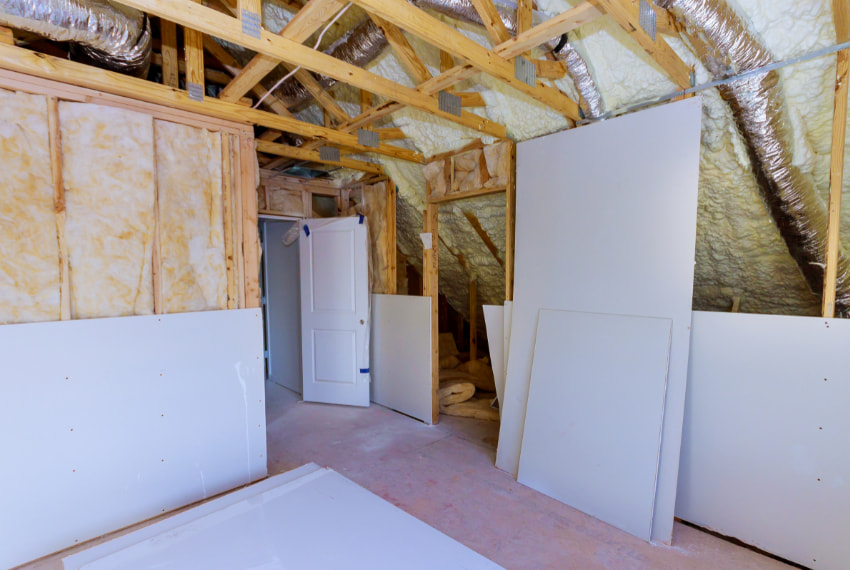The Best Time to Book Plastering Services in Your Renovation Timeline
Planning a home renovation requires more than just a vision of the finished space — it demands careful scheduling to ensure each stage flows smoothly. One of the most critical but often misunderstood parts of this process is knowing when to book plastering services. Plastering sits at the heart of most renovation projects, providing the smooth, even surfaces needed for painting, tiling, or decorating. Getting the timing right can make all the difference between a flawless finish and a frustrating delay. Buxton Plastering explains when and why to book plastering services within your renovation timeline to ensure your project in Buxton runs efficiently from start to finish.
Understanding the Role of Plastering in Renovation
Plastering is one of the final structural stages in any interior refurbishment. It bridges the gap between the raw build and the decorative phase, creating a seamless surface on walls and ceilings. Once the plaster is applied and dried, it sets the stage for every subsequent aesthetic improvement — from painting and wallpapering to fitting electrical fixtures and trims.
Because of this, plastering must be carefully timed to occur after the structural and mechanical work is complete, but before final finishes are applied.
When Plastering Should Take Place in Your Renovation Timeline
In most home renovation projects, the correct point to bring in a plastering professional is after the major construction and installation stages but before decorating or flooring begins. Here’s how that fits into the broader schedule:
1. Structural and Building Work Comes First
Any major building work, such as extensions, wall removals, or new partitioning, must be completed before plastering starts. The surfaces must be secure, stable, and fully prepared for the plaster to adhere properly. Attempting to plaster too early can result in cracks, uneven finishes, or the need for rework later on.
2. Electrical and Plumbing Installations Before Plastering
Once the main building framework is finished, electricians and plumbers should complete their “first fix” work — installing wiring, sockets, switches, and pipes that sit within the walls or ceilings. This stage must be completed before plastering, as the plaster covers and conceals these systems to create a clean, finished look.
3. Plastering Takes Place After All Rough Work
After all structural, electrical, and plumbing work is finalised, the surfaces are ready for plastering. Walls and ceilings should be checked for dampness, dust, or loose debris to ensure the plaster adheres evenly.
At this point, professionals from Buxton Plastering can prepare the area, apply bonding coats where necessary, and complete the plastering process to achieve a smooth, durable finish.
4. Allow Drying Time Before Decorating
Once the plastering is complete, the drying phase begins — a crucial step that must not be rushed. Depending on the size of the area, the type of plaster used, and the room’s ventilation, this can take several days to a couple of weeks. Painting or wallpapering before the plaster is fully dry can lead to peeling, staining, or uneven results.
To keep your project on schedule, always factor this drying time into your renovation plan.
Why Proper Timing Matters
Booking plastering services at the right point in your renovation isn’t just about convenience — it affects quality, durability, and efficiency.
Benefits of Correct Timing:
- Prevents rework: Plastering before electrical or plumbing work is complete can mean sections need redoing, wasting time and materials.
- Ensures a perfect finish: Clean, uninterrupted walls make decorating easier and more professional-looking.
- Reduces disruption: Plastering too early can expose finished surfaces to damage from other trades still working in the area.
- Improves drying and curing: Scheduling plastering before colder months or ensuring adequate ventilation speeds up drying and prevents cracking.
At Buxton Plastering, careful planning and communication with other trades ensure that plastering fits seamlessly into the project timeline.
How Far in Advance Should You Book Plastering Services?
Demand for skilled plasterers often fluctuates, especially during peak renovation seasons such as spring and early summer. To avoid delays, it’s best to book your plastering services well in advance — ideally once your project dates and construction schedule are confirmed.
By consulting with a local specialist like Buxton Plastering early in the planning process, you can receive expert advice on preparation, scheduling, and how best to coordinate with other trades. This proactive approach helps prevent costly delays and ensures the plastering phase is completed precisely when needed.
Signs You’re Ready to Book Your Plasterer
If you’re unsure whether your project is ready for plastering, consider these indicators:
- All internal structural work, stud walls, or ceilings are completed.
- Electrical wiring and plumbing installations have been fully fitted (first fix complete).
- Insulation and plasterboard have been installed where required.
- The property is dry, watertight, and free from major drafts.
- You’re preparing for interior decorating or flooring stages.
Once these milestones are reached, you’re ready for professional plastering to take your renovation to the next stage.
Plastering for Different Types of Renovation Projects
Plastering requirements and timing can vary depending on the type of renovation you’re undertaking:
Home Extensions
For extensions, plastering is typically one of the final stages before painting or tiling. Once the structure is watertight and internal utilities are complete, plastering ties the new space into the existing property seamlessly.
Loft Conversions
In loft conversions, plastering follows insulation and boarding work. It helps regulate temperature, adds soundproofing, and prepares the walls for a clean decorative finish.
Full Property Renovations
When renovating an entire property, plastering is often completed room by room to coordinate with plumbing, electrical, and joinery schedules. Strategic sequencing prevents delays and ensures each section is finished to a high standard.
Working with a Professional Plastering Team
Professional plasterers don’t just apply plaster — they also advise on timing, materials, and preparation. Skilled tradespeople like Buxton Plastering coordinate effectively with builders, electricians, and decorators to keep projects running smoothly. Their experience ensures surfaces are properly prepared, finished to perfection, and ready for decoration within the ideal time frame.
By bringing in experts at the right point in your renovation, you ensure every wall and ceiling is smooth, strong, and built to last.
Conclusion
Plastering plays a pivotal role in transforming a building site into a finished home, but it must be timed correctly within the renovation process. Booking your plastering services after major structural, electrical, and plumbing work — and before decorating — guarantees a flawless finish that sets the tone for the rest of your project. For homeowners and property developers in Buxton and across Derbyshire, Buxton Plastering provides expert timing, craftsmanship, and coordination to ensure your renovation runs seamlessly from start to finish.
Call us on: 01298 608 485
Click here to find out more about Buxton Plastering
Click here to complete our contact form and see how we can help with your plastering needs.

